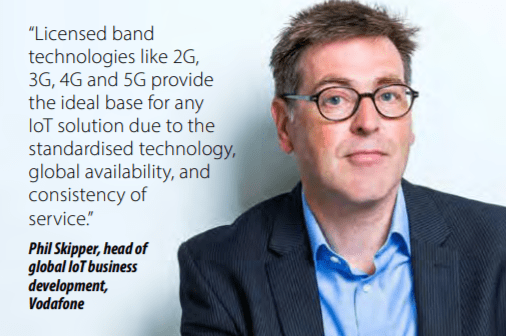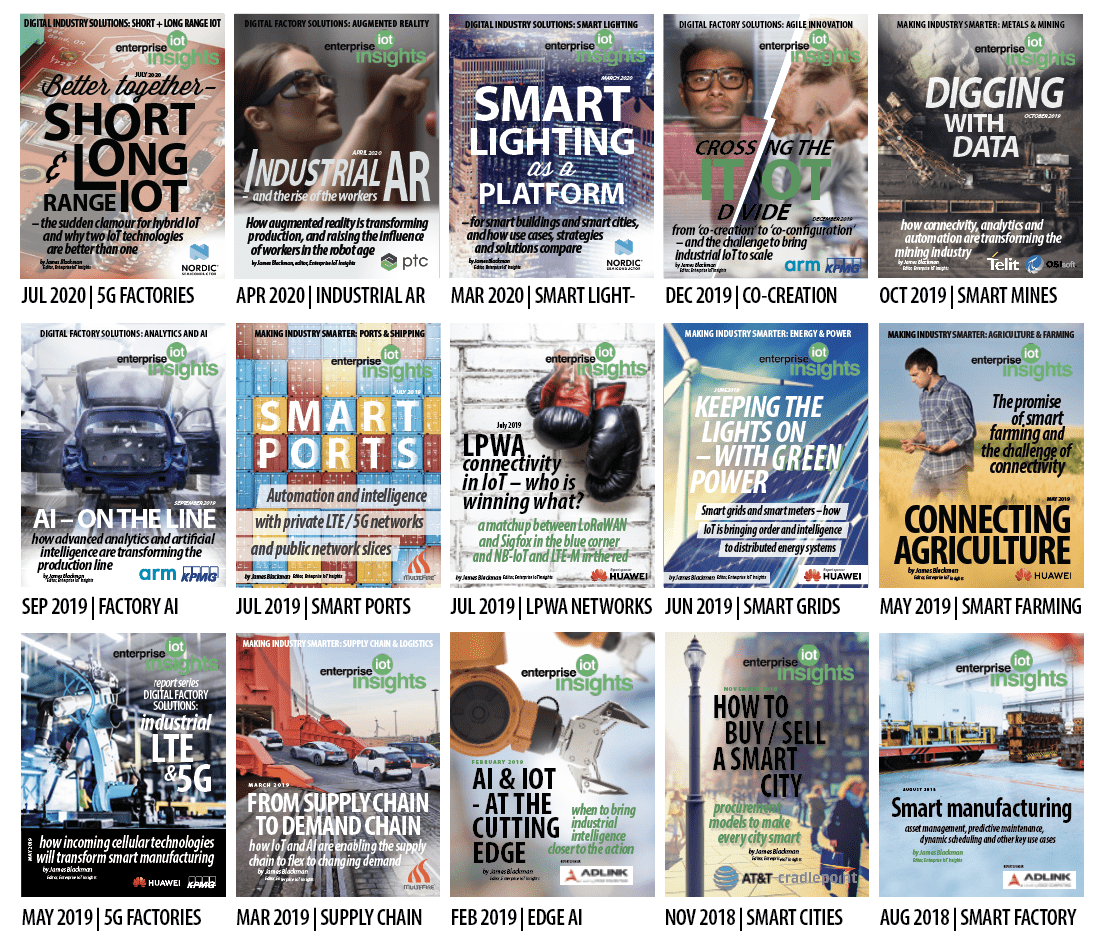Note, this article is taken from a new Enterprise IoT Insights editorial report on the combination of low-power short- and long-range communications technologies in hybrid IoT systems. Go here for the full report, which is free to download. A webinar on the same subject, with panellists from ABI Research, the Bluetooth SIG, Nordic Semiconductor, Sigfox, and The Things Network, is available here.
The idea the IoT market is necessarily complex, as presented in the main article, is not shared by everyone. The top-down view is it has gone from proof-of-concept to ‘proof-of-value’. More than this, the developer concept of ‘co-creation’ – of collaborative innovation – is tired, perhaps.
This is the view of Vodafone, articulated in these pages before by Phil Skipper, the company’s global head of IoT business development. The IoT market is no longer so novel or messy that technology experts and domain experts must work in protracted collaboration to create solutions from scratch, he says.
There are, it turns out, only three use cases, or ‘use classes’, and one does not even exist yet. Asset tracking and remote monitoring are the only ones that matter now; everything else riffs on these. The emergence of URLLC-grade 5G will introduce a third: a means for ultra-reliable industrial control.
The old telecoms sector, which stands to deliver this new digital-change service must sell reliability-as-a-service, and be prepared to put its money where its mouth is. But before then, the market can spin-up a matrix of services off these other two use classes, which can be shown to deliver value already, and offer enterprises magic tonics for digital change, available on subscription.
So what does Skipper make of the late coming-together of connectivity technologies in hybrid IoT solutions. Here are his thoughts.
Which wide-area and short-range IoT technologies work best together?
“Licensed band technologies like 4G and 5G provide the ideal base for any IoT solution due to the standardised technology, global availability, and consistency of service. This gives OEMs, especially those that operate or distribute products globally, a major advantage in terms of simplicity of deployment and management of the installed base.
 “With the introduction of LPWA networks like NB-IoT and LTE-M, licensed technologies can support battery powered devices that also need high levels of in building penetration. However, other technologies, especially low-power short-range ones, provide complementary connectivity that is well suited to connecting low-power devices to a gateway into the licensed environment.
“With the introduction of LPWA networks like NB-IoT and LTE-M, licensed technologies can support battery powered devices that also need high levels of in building penetration. However, other technologies, especially low-power short-range ones, provide complementary connectivity that is well suited to connecting low-power devices to a gateway into the licensed environment.
“Many smart home and medical devices rely on this combination to make it easy to connect low cost devices using Bluetooth or Zigbee to a gateway, which connects directly to the operator. This approach offers the transparency and control to ensure the connection to the location – a room in a house or manufacturing cell, for example – is secure and direct, while avoiding issues with configuration, for instance.”
What are their respective strengths and weaknesses?
“There are clear differences in terms of performance when it comes to message latency, for example, but also message size, support for voice, and more. With licensed technologies, the combination of 2G, 3G, 4G and now 5G plus NB-IoT and LTE-M, provides connectivity options that adapt well to the application requirement.
“An example are alarms: for low bandwidth alarms, NB-IoT is a great fit. If you need an alarm with voice support, you would go with 2G and 3G. Finally, 4G and 5G offer high bandwidth and low latency when needed.”
Are industrial companies looking for flexibility between these technologies?
“They are looking for flexibility between these technologies for two reasons. Firstly, their plant might have different machines, cells, and lines from multiple providers. Each provider may have a preference and it would be difficult for one company to dictate the connectivity choice of all their capital plant suppliers.
“Secondly, they may want to combine data collection and analytics. This involves unified factory communications as well as high bandwidth services for 3D printing, AI and VR , and the upload of real time manufacturing quality data.
“Private 4G and 5G networks provide the backbone across the factory but it is highly likely the system will have breakouts for low-distance wireless sensing devices using a range of different technologies including Bluetooth or Zigbee. We already see this happening in many industries.
“Our Raptor gateways enable multiple devices to be simply connected and standardised into a common data structure, which can then be used across the whole system.”
How does this impact hardware design?
“The Raptor model provides a level of independence between the user and producer of the sensing devices. As long as protocols are available, device makers can continue to innovate their devices and customers can continue to choose the ones they think fit.
“When you talk about devices in the public domain for direct connection services like NB-IoT, LoRaWAN, and Sigfox, the question is more about what exists in the chipset itself. As markets crystalise, hybrid chipsets become more common and we see this with hybrid devices supporting a number of technologies.
“Combining NB-IoT and LTE-M is also common, as it provides a way to use licensed tech across operators. Dual licensed and unlicensed devices are also an option. However, they generate a degree of service overlap as you can use both for backhaul.”
Does hybrid IoT open up new use cases?
“New use cases may reduce the need for hybrid solutions but a new use case could exist for ‘dual redundant’ access using RFID and in smart factories, where there will be a lot of ‘work in motion’ that will have to be tracked.
“In this case, you can imagine a combination of low cost beacons and trackers combined with a high bandwidth control network, which is connecting the transfer tables, automated vehicles, and transferring data between them.”
Does it reinforce these technologies?
“It depends on the application. In the ‘private’ space such as a factory, the answer is probably yes but in the ‘public’ space the answer is probably no.”
Note, this article is taken from a new Enterprise IoT Insights editorial report on the combination of low-power short- and long-range communications technologies in hybrid IoT systems. Go here for the full report, which is free to download. A webinar on the same subject, with panellists from ABI Research, the Bluetooth SIG, Nordic Semiconductor, Sigfox, and The Things Network, is available here.


